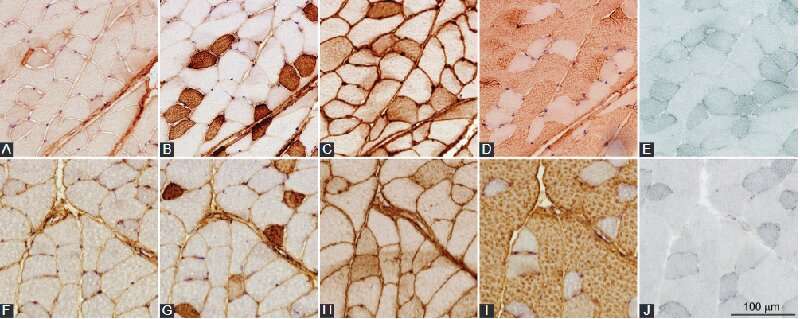Researchers studied the lipid accumulation in skeletal muscles in obesity

Previous studies have shown that, in obesity, deposition of lipid droplets in skeletal muscles and changes of muscle fiber types can both contribute to insulin resistance. However, the relationship between such lipid accumulation and fiber-type changes is yet to be clarified.
Therefore, the authors of the study published in BJBMS sought to investigate the lipid accumulation in different muscle fiber types in different skeletal muscles.
The authors from the University of Ljubljana studied the muscle fiber type composition and muscle fiber lipid content in high-fat diet-induced obese mice compared to lean control mice, using three metabolically different muscles with similar function: the fast-twitch gastrocnemius, the intermediate-twitch plantaris and slow-twitch soleus muscles.
They found higher lipid content and larger size of fibers in obese mice, particularly in type 2a and 2x/d muscle fibers. The changes were more prominent in fast-twitch than slow-twitch skeletal muscles. Furthermore, in obese mice the shift towards less insulin-sensitive fiber types was most pronounced in the slow-twitch soleus muscle.
These findings indicate that muscle lipid accumulation in obese mice is specific for both muscle and fiber types, suggesting that in obesity, similar muscle fiber types in different muscles accumulate lipids differently. However, the results should be generalized cautiously, mindful that rodent models may not fully mirror the complexity of human disease.
Overall, this study extends the current understanding of the significance of muscle fiber type changes and their lipid content in the development of obesity-related insulin resistance. Future studies examining the mechanisms and time-course by which muscle lipid accumulation contributes to insulin resistance will further illuminate this causative link.
More information:
Umek N, Horvat S, Cvetko E. Skeletal muscle and fiber type-specific intramyocellular lipid accumulation in obese mice. Bosn J of Basic Med Sci. 2021May12
Provided by Association of Basic Medical Sciences of FBIH